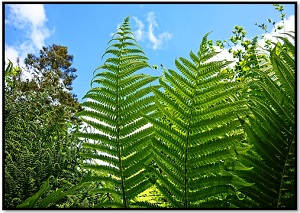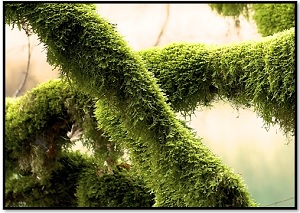The difference between vascular and nonvascular plants is mainly characterized based on the presence or absence of vascular tissues and their categorization in the plant taxonomy. The presence or absence of vascular tissue distinguishes the vascular plants containing lignified vascular tissues from the nonvascular plants that lack a specialized vascular system.
The translocation of food, water and minerals is facilitated by the coordination of vascular vessels within roots and stems. Vascular plants are the higher plants belonging to the group of tracheophytes, which comprise a well-developed root system and shoot system.
Oppositely, the nonvascular plants are the lower plants belonging to the group of bryophytes, which appear microscopic and possess small leaves and rhizoids instead of roots.
This post discusses the key differences between the vascular and nonvascular plants along with the comparison chart. You would also get to know the definition and similarities between the two.
Content: Vascular Vs Nonvascular Plants
Comparison Chart
| Properties | Vascular Plants | Nonvascular Plants |
|---|---|---|
| Definition | Vascular plants are the green plants of varying shapes and sizes, which comprise a specialized xylem and phloem vessels for water, minerals and food conduction, and along with that also possess a true root and shoot system | Non-vascular plants are the green and microscopic plants with poorly developed root and shoot system, and do not have a vascular system or the mechanics for water and food transportation |
| Size | These plants grow larger in size | This group of plants are generally microscopic or grow relatively smaller compared to non-vascular plants |
| Absorption | These possess deep roots that are specialized to absorb water through osmosis | These plants lack deep root system and depend solely on osmosis and diffusion to absorb water passively |
| Root System | Vascular plants possess a true root system that supports the plant body by absorbing water and essential minerals from the soil, necessary for the plant growth and development | Nonvascular plants possess shallow roots or rhizoids instead of a true root system |
| Dominant generation phase | Its principal generation phase is sporophyte that lasts longer | In nonvascular plants, the gametophyte phase is the dominant phase that persists longer |
| Stem/Shoot system | They possess a well-developed shoot system | A true shoot system is absent, as they only possess small leaves and lacks true stems, roots, flowers, fruits, wood etc. |
| Reproduction | It is achieved via seed | It is achieved via spores |
| Leaves | Vascular plants possess true leaves that have cuticle, epidermis, meristematic cells, and stomata that are specialized to do distinct functions | They lack true leaves and specialized cells or tissues |
| Growth habitat | These can grow in variety of habitats | These can grow in swampy, marshy, and damp places |
| Examples | Clubmosses, grasses, sunflower, pines, horsetails, true ferns, angiosperms and gymnosperms | Mosses, green algae, liverworts and hornworts |
Definition of Vascular Plants
Vascular plants or tracheophytes constitute a large group of terrestrial plants that carry specialized vessels (xylem and phloem) that are well distributed in the roots, stems, and leaves. Xylem and phloem cells constitute the vascular system and aid the translocation of food and water all over the plant body.

Besides, the vascular system also provides support and rigidity to the plant. Vascular plants possess well-developed vascular tissues, meristematic tissues, ground tissues, and dermal tissues. The life cycle of a vascular plant has alternations of two generations, in which a diploid sporophyte phase lasts longer.
The characteristic feature of vascular plants is that they comprise a true root and shoot system. Vascular plants include trees, shrubs, grasses, ferns, conifers, and flowering plants. The plants belong to this group have diverse and complex life cycles. The vascular vessels in vascular plants are of two kinds, depending on what they transport.
The phloem vessels transport the photosynthetic food material to the rest of the plant body. In contrast, xylem vascular vessel aids the conduction of water from roots up to the whole plant.
Definition of Nonvascular Plants
Nonvascular plants or bryophytes form a group of aquatic and terrestrial plants that do not possess specialized vessels (phloem and xylem) to conduct water and minerals throughout the plant body. They include bryophytes like green algae, mosses, ferns, liverworts, and hornworts.

Nonvascular plants are considered lower plants, as they neither possess true leaves, stems, roots, flowers, and fruits nor specialized tissues for water and food conduction. For water translocation, nonvascular plants have simple tissues. A haploid gametophyte generation is prominent in the life cycle of bryophytes or nonvascular plants.
They appear microscopic and grow very small. Instead of roots, they contain rhizoids that only support the plant body and perform no special role in the absorption of water.
Nonvascular plants lack deep roots that absorb water. So, to combat water requirements, they are generally found in moist environments to remain in touch with the water source. The reproductive strategy of nonvascular plants is quite different, as they can reproduce sexually via single-celled spores or asexually by budding and fragmentation.
Key Differences Between Vascular and Nonvascular Plants
- The vascular plant constitutes a group of plants that possess a true root and shoot system with a well-developed vascular system for water, minerals, and food translocation. Oppositely, the non-vascular plant appears simple and short that neither comprise mechanics for water and food conduction nor a true root and shoot system.
- Vascular plants grow larger due to their well-organized vascular system (phloem and xylem). Oppositely, non-vascular plants are relatively smaller in size.
- The root system of vascular plants possesses deep roots that anchor the plant and absorb nutrients from the soil. In contrast, the non-vascular plant possesses hairy structures or rhizoids in place of deep roots that keep the plant at its place.
- Both plants’ life cycles have an alternation of generations, where one phase dominates over the other. A diploid sporophyte and a haploid gametophyte phase is the dominant or principal generation phase of vascular plants and nonvascular plants, respectively.
- Vascular plants comprise true stems that participate in photosynthesis and facilitate gaseous exchange. Conversely, nonvascular plants rarely comprise a true stem system.
- Vascular plants can grow in various habitats, while non-vascular plants particularly grow in marshy, shady, and moist places.
Similarities
- Vascular and nonvascular plants belong to the kingdom Plantae.
- Both are photoautotrophic.
- The means of asexual reproduction are common in both vascular and nonvascular plants.
- Fertilization and embryo development is similar in the vascular and nonvascular plant.
- Both plants exhibit alternation of generations (sporophytic and gametophytic phases).
Conclusion
Therefore, we can conclude that the vascular and nonvascular plants are green, photoautotrophic plants belonging to the kingdom Plantae. There are many phenotypic differences among these two, like the plant length, presence of true leaf, stem and deep roots. Besides, there are many physiological differences, like the presence of the vascular system.
The nonvascular plant has first evolved, which is why they lack cell mechanics for water and food translocation. Thus, the nonvascular plant is the common ancestor of the vascular plant.